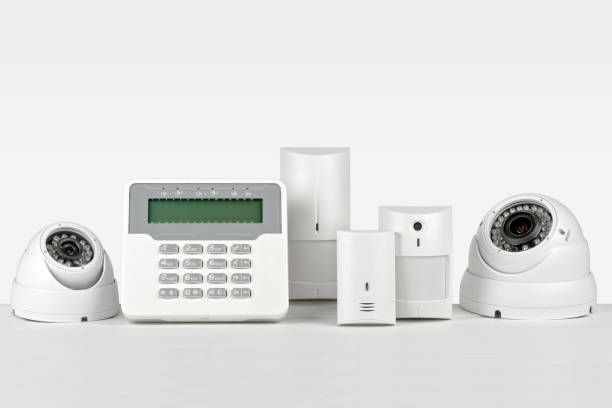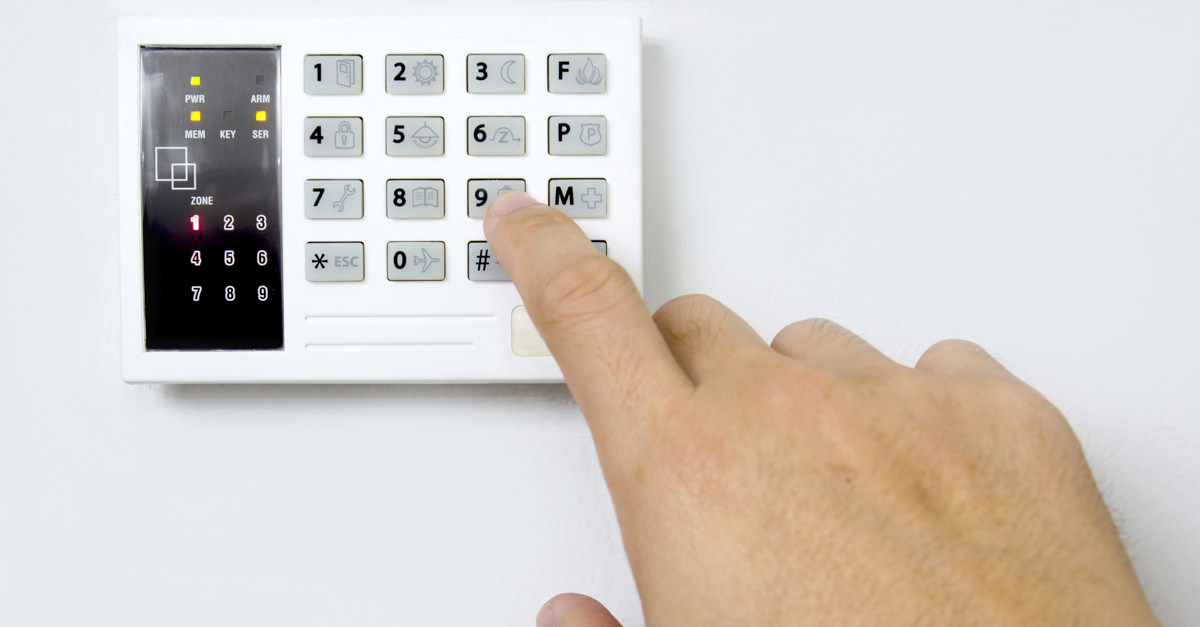
Whether you’re securing a home, retail store or other commercial business, you need dependability from your systems.
Homes and businesses which do not employ any form of security measures are 10 times more likely to be burgled than those with simple security measures
- Homes and businesses with no burglar alarm are three times more likely to be broken into than those with alarms.
- Around 20% of all house burglaries are carried out without forced entry. A burglar may see an open window or other easy point of entry and take their chance.
- Visible burglar alarms make intruders think twice. They not only act as a deterrent, but will also provide a warning that an intrusion is taking place.
There are various reasons for adopting a trap protection strategy.
- The first is to limiting the false alarm potential of an alarm system. All detectors (even the top of the range ones) sometimes cause false alarm. This is becoming an increasing problem due to the hard line Police forces now take regarding attendance. False alarms result in a withdrawal of Police attendance and the more detectors a property has the higher the false alarm potential.
- Another important reason is cost – if using a good quality sensor it would be expensive to protect each room.
Features of excellent motion detectors
- They feature Microwave Noise Adaptive Processing to easily differentiate humans from false alarm sources, such as a ceiling fan or hanging sign.
- For increased reliability, dual sensors must process the PIR and microwave signals independently and must agree there is an alarm before the relay activates.
- There must be sealed optical chambers to prevent drafts and insects from affecting the detector, and our pet-friendly models rule out motion from family pets or guard dogs, so you only handle valid alarms.
- The detectors must integrate and process data from up to 6 different sensors to make intelligent alarm decisions.
- It provides the best analysis of disturbances and adjusts to the background for ultimate false alarm immunity.
Components of a burglar alarm
The intruder system comprises detectors, control panels and communications devices.
Detectors identify and react to specific occurrences including movement, shock, vibration, smoke, heat, and flood.
Different types of detectors are available, each protecting different aspects of the property. These include:
- Passive infrared sensors (PIRs) detect people moving using infrared heat sensing,
- Dual Technology sensors use combined infrared and microwave sensing technologies to help reduce false alarms,
- Magnetic door contacts detect the opening and closing of doors and windows,
- Glass break sensors listen for the specific noise of breaking glass,
- Shock sensors detect attacks on doors and windows,
- Smoke sensors can be connected to the intruder alarm system to detect fire.
The control panel
It is the brains of the system to which detectors are connected.
It analyses and actions signals from detectors and is operated by a keypad. Keypads are sometimes integrated into the control panel e.g. Optima Compact, or these can be remote with LED or LCD displays. LED keypads communicate alarm system status using LED indicators.
LCD keypads use text displays to give a fuller picture of the alarm status including event logs, entry and exit times of users, and ultimately enable speedy identification of alarm sources. Control panels come in different shapes, sizes and complexities depending on the type and size of property to protect.
- Number of zones (areas) to protect.
- Ability to set all or part of the system.
- The number of Remote keypads it can accommodate.
- Event memory log PA & Tamper inputs.
In the event of alarm activation, the keypads identify the problem & inform the occupants of the cause and location of the alert.
DETERRENTS
- Sounders and sirens use different tones and rhythms to communicate the type of alarm internally and/or externally.
- Externally mounted sounders and sirens are a good visual deterrent for potential intruders and quickly alert property owners and neighbours to an intrusion. The strobe helps to identify the house when an alarm has gone off.
ALERTS
- Communications devices such as the Informa speech dialer send pre-recorded voice messages by telephone when an alarm is triggered. These messages can be sent to the homeowner or nominated contacts either via land line or mobile phone.
- This is particularly useful for isolated properties and allows action to be taken when property owners are away from home.
Step 1: Conduct a site survey
The location survey comprises two stages:
- A risk-assessment of the building content – the total value of target items (electrical goods, jewellery and so on) will generally indicate the level of security required.
- A risk assessment of the building’s fabric and structure – how easy or difficult it might be to wire the entire the building, the level of physical security, location, break-in history and so on.
- The technical survey looks at those factors than might influence the choice and design of system and the final system design proposal. It will look at any aspect that might impact on the performance of the system such as electrical interference from local plant or machinery.
- The grade of intruder alarm system will depend upon the performance required as determined by the location survey.
The site survey
- Is the property isolated or in a built-up area?
- What parts of the property have to be protected? Does the entire property or just part require to be protected? What areas does the customer want to protect to identify the number of zones required?
- How many entry doors exist at the property and that require protection?
- In addition to intruder protection, does the customer require fire protection?
- How many zones will be required?
- What type of keypad does the customer require (integral, LED or LCD)?
- Does the customer require additional keypads?
- Where will the control panel be located?
- Does the customer require the windows to be protected?
- How many rooms are to be protected with movement detectors?
- Does the customer have pets that will remain in the house when the system is set?
- What type of alert is required? (Sounding/visual/remote phone communication)?
- Where will the external siren be located?
- Is a dummy siren also required?
- Is keyfob operation more suited to the household?
Step 2: Map out the property and select products
Using the information obtained during the site survey, map out property layout and select the most appropriate products for the installation.
Step 3: Decide where to position the Intruder alarm system components
- Control Panels
- Remote LCD or LED Keypads
- PIR Motion Sensors
- Break Glass Devices
- Inertia Detectors
- Door Contacts.
- Sirens
- Speech Dialer Communication

Types of Alarm Systems
- Audible Only alarms
- Speech dialer or Auto (GSM) dialer system
- Monitored systems
Intruder alarms are categorised into 4 different grades, based on their levels of performance (such as functionality, reliability and durability). Anyone who is thinking of installing, upgrading or changing their intruder alarm system, should understand this grade system to ensure they feel confident in their building security.
Intruder Alarm Grades
In Britain and Europe, intruder alarm systems, and the equipment used within them, are categorised into a grade system, between 1-4.
These grades are measured on an increasing level of sophistication and resilience against intrusion and break-ins, with Grade 4 representing the highest level of security.
Most installations for domestic homes will require a Grade 1 or 2, with larger/high risk homes falling into Grade 3. Most commercial properties are likely to fall within Grade 2 or 3 systems. Grade 4 is rare due to the standards required and is only recommended for very high-risk properties.
Something else worth noting is that a security system grade is as only as high as the lowest grade component within the system. For example, if an intruder alarm system included 10 devices/components that were Grade 3, but one device that was Grade 2, the overall Grade for that system would be 2. This is due to the lower Grade equipment or devices potentially creating vulnerabilities within the whole system, thus bringing down the overall level of security.
Below is a brief description for each grade. For a more in-depth review of each grade, contact our expert team who will be more than happy to explain things in more detail.
Grade 1
Grade 1 is the lowest level of intruder alarm system. It is designed to protect against basic theft and intrusion. It should be adequate at preventing inexperienced attackers from entering a property. This is likely to include the protection of major entry points such as a front door but may not protect other parts of a building. It assumes the burglar/thief doesn’t know how to disarm alarm systems.
This is recommended for low risk buildings that don’t have valuable contents or that aren’t located in a high-risk area.
Grade 2
Grade 2 systems offer additional security through better technology and reliability. This level is prepared for burglars with some knowledge and preparation for the attack. It protects multiple entry points and offers a more comprehensive solution.
This is often suitable for higher risk homes and lower risk small commercial properties (as recommended by BIBA).
Grade 3
Grade 3 systems are designed to combat burglars and attackers with advanced knowledge, tools and equipment (including portal electronic devices). The system is comprehensive and protects all potential entry points of a building.
High risk homes and lots of commercial properties fall into this category.
Grade 3 is currently only given to wired security solutions, so any wireless systems will fall into Grade 1 or 2.
Grade 4
Grade 4 is the highest level of security and is consequently designed to protect against the most professional and targeted attack. Grade 4 systems are quite rare on the market due to the utmost standards required.
High risk properties containing valuable or dangerous contents would likely fall into this category.
Risk Assessment and Grade Recommendations
When it comes to security, it is always recommended to get professional advice and recommendations. Guessing what systems to use and using unqualified installers is irresponsible and dangerous.
Our experienced surveyors can advise you on all types of security systems to provide you with the optimum level of security to suit your budget. This involves reviewing your property and designing tailored recommendations for products, system design and overall installation and maintenance.
The type of security system and design we would recommend will depend entirely on the site visit and risk assessment. Once we understand all the potential risk, value of contents, property layout, and other key metrics, we can make tailored recommendations.
For properties requiring high levels of security, our systems can be fully monitored by being linked to a central monitoring station, which will immediately notify the local police or nominated key holder should an alarm be activated. Our intruder alarm systems can also be integrated with panic attack buttons, CCTV systems, access control and smoke screen products.
All our security systems adhere to the regulations imposed by the National Security Inspectorate, Association of Chief Police Officers (ACPO) and all insurance companies. This means you have peace of mind when it comes to the security of your property.
To learn more about our approach to intruder alarm systems, simply get in touch with us today.

